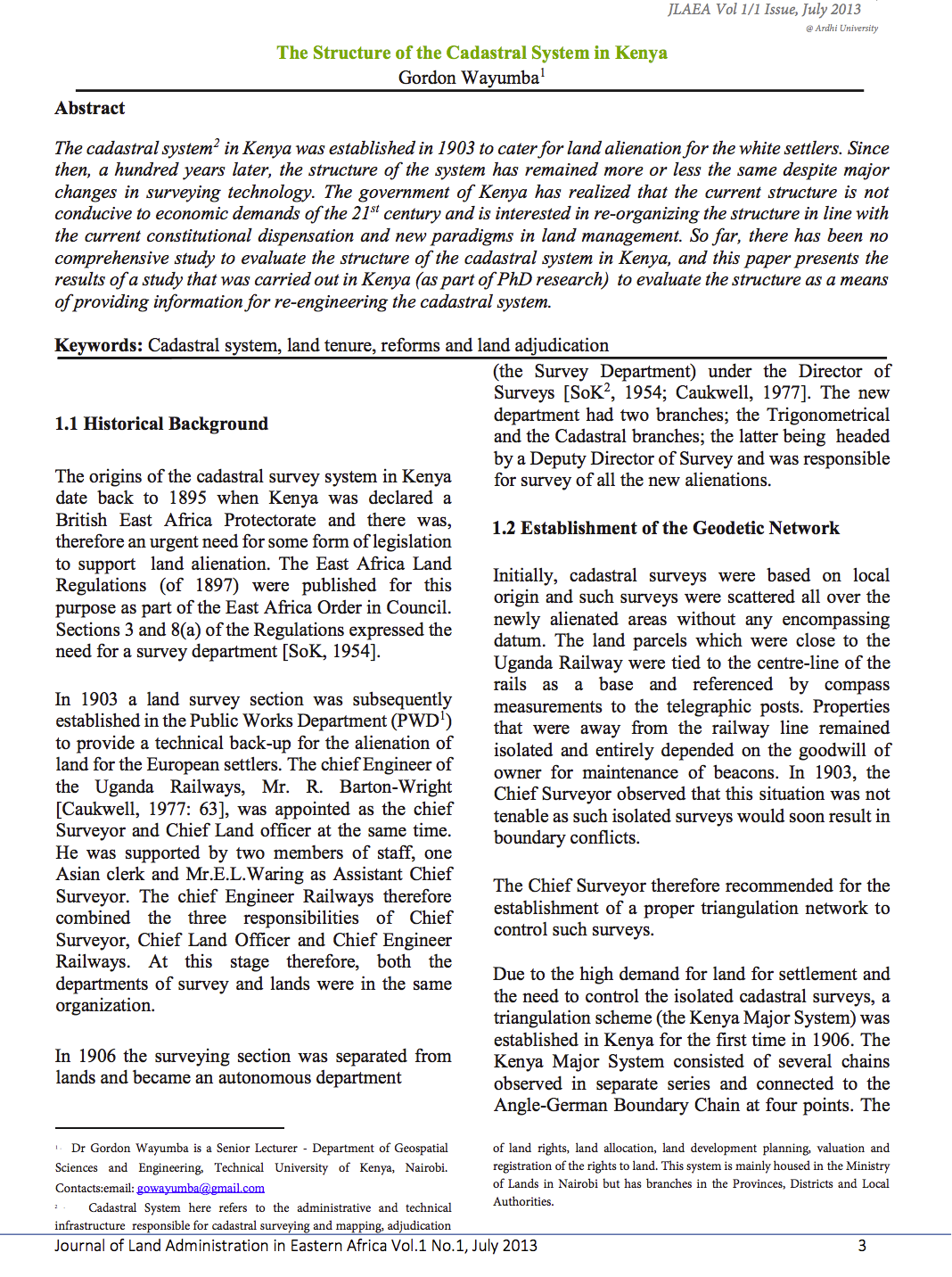Focal point
Location
Land Development and Governance Institute
MISSION: To contribute to improved livelihoods through offering a bridge between communities, stakeholders and policy makers in the promotion of equitable access and sustainable management of land and natural resources.
VISION: To become a centre of excellence in promoting the application of appropriate land policies, laws and management practices by empowering society through innovative and knowledge based advocacy and capacity building in Kenya and the region. LDGI values of Integrity, Trust and Professionalism influence the way we work every day and everywhere.
Members:
Resources
Displaying 46 - 50 of 73AN ASSESSMENT OF THE PERFORMANCE OF THE ENVIRONMENT AND LAND COURT
Dispute resolution is a key component of land administration and management in Kenya. Article 162 of the Constitution of Kenya provides for the establishment of the Environment and Land Court (ELC) by an Act of Parliament. Further, parliament is mandated to determine the jurisdiction and functions of the courts. In 2011, parliament passed the Environment and Land Court Act through which the Environment and Land Court was established. In accordance with the provisions of this act, the court is mandated to ensure reasonable and equitable access to its services in all counties.
Towards Kenya’s Profile of the Land Administration Domain Model (LADM)
The application of computer technology in land administration is touted as one way of ensuring efficient and transparent land administration. Although this true, one major concern is not only how to create a computerized land information system that is interoperable across different government departments responsible for different land administration functions, but also how to ensure interoperability between national and devolved levels of government departments responsible for land administration.
AN EVALUATION OF THE CADASTRAL SYSTEM IN KENYA AND A STRATEGY FOR ITS MODERNIZATION
The Cadastral system in Kenya was established in 1903 to support land alienation for the white settlers who had come into the country in the early part of the 20th Century. In the last hundred years, the system has remained more or less the same, where land records are kept in paper format and majority of operations are carried out on a manual basis. The lack of a modern cadastral system has contributed to problems in land administration in the country.
The Structure of the Cadastral System in Kenya
The cadastral system in Kenya was established in 1903 to cater for land alienation for the white settlers. Since then, a hundred years later, the structure of the system has remained more or less the same despite major changes in surveying technology. The government of Kenya has realized that the current structure is not conducive to economic demands of the 21st century and is interested in re-organizing the structure in line with the current constitutional dispensation and new paradigms in land management.
The Structure of Cadastral System in Kenya
The cadastral system2 in Kenya was established in 1903 to cater for land alienation for the white settlers. Since then, a hundred years later, the structure of the system has remained more or less the same despite major changes in surveying technology. The government of Kenya has realized that the current structure is not conducive to economic demands of the 21st century and is interested in re-organizing the structure in line with the current constitutional dispensation and new paradigms in land management.






